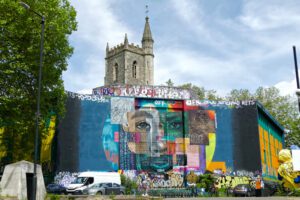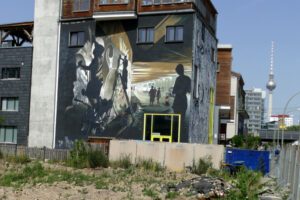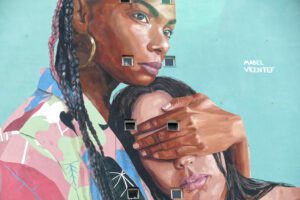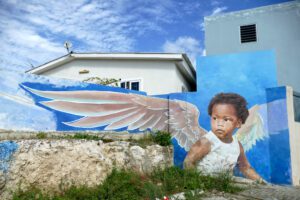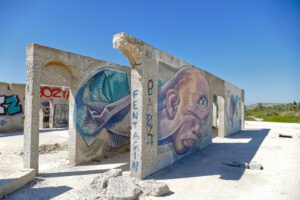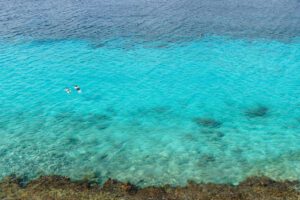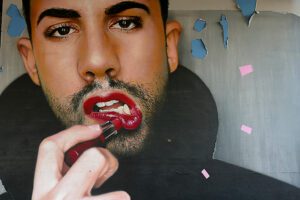Each time I write a post on the supposedly best street art in some place, I’m a bit hesitant. Can I rightfully claim to present the best pieces? Most of the time, I haven’t seen each and every mural a city has to offer. And even if I show a broad selection – who’s to judge what’s best, anyway?
Now, when it comes to Lisbon, I find my claim to introduce you to the best street art particularly preposterous as this city is just bursting with urban art. There are murals by the greatest of the greatest street artists everywhere. Also, the art festivals that flood Lisbon’s walls with dozens of new artworks every year don’t make the choice any easier. Yet, not only did I travel around the hotspots in the city center, I also made my way to the housing projects in Lisbon’s suburbs which are embellished by international superstars such as KOBRA, Shepard Fairey, and GLEO.
I tried hard to see as many murals as possible so that I could rightfully assert: In this post, I’m introducing the best pieces of street art Lisbon has to offer!
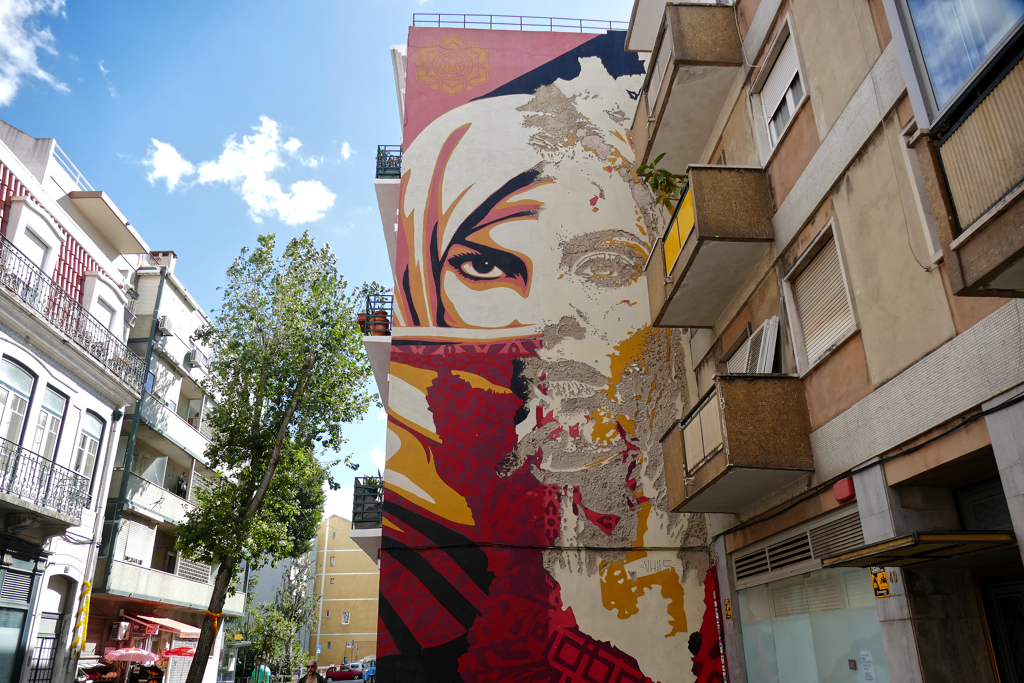
Street Art in Lisbon
The history of street art in Lisbon is deeply intertwined with the city’s vibrant cultural and political evolution. It began to gain prominence in the 1970s, during Portugal’s political transition from the authoritarian Estado Novo regime to democracy following the 1974 Carnation Revolution. At this time, street art was primarily used as a form of political expression, with murals and graffiti reflecting the revolutionary spirit, social movements, and the fight for democracy.
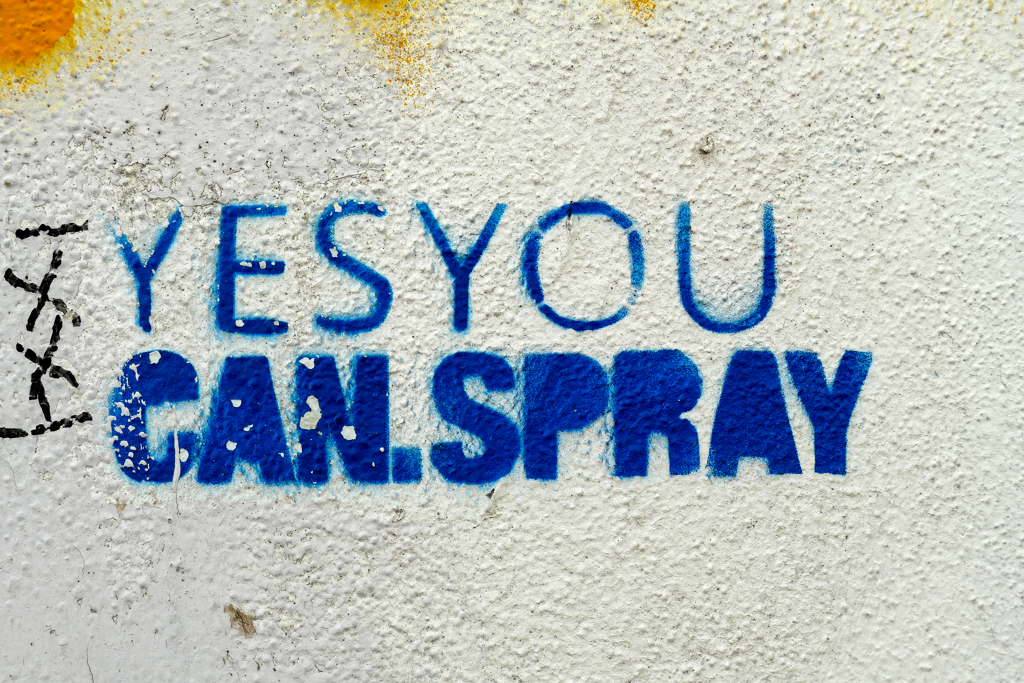
By the 1980s and 1990s, street art in Lisbon evolved, embracing more artistic and non-political themes, influenced by global graffiti and hip-hop culture. It remained largely an underground movement until the 2000s when the city began to embrace street art as a legitimate art form. This shift was partly driven by the global rise of urban art, but also by a growing appreciation for the aesthetic transformation of neglected urban spaces.
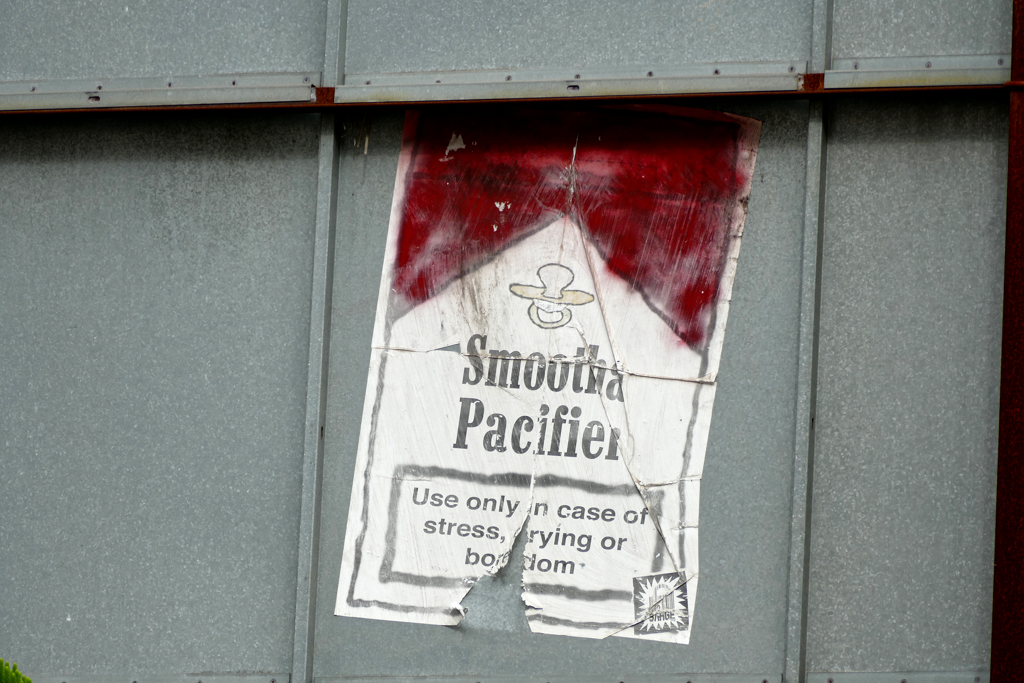
Lisbon’s historic neighborhoods became canvases for both local and international artists. Also, the city’s authorities began to recognize the potential of street art to beautify and regenerate neglected areas.
Today, Lisbon is regarded as a global hub for street art.
Graça
Contrary to other claims, Graça is no longer an insider tip. Yet, in contrast to the Alfama neighborhood further south, you probably won’t find large groups of tourists constantly pushing their way through the main streets. Whereby, I would only call them main streets in contrast to the narrow side alleys. Despite Lisbon being one of the most touristy cities in Europe and moans about over-tourism, Graça miraculously managed to preserve its village charm.
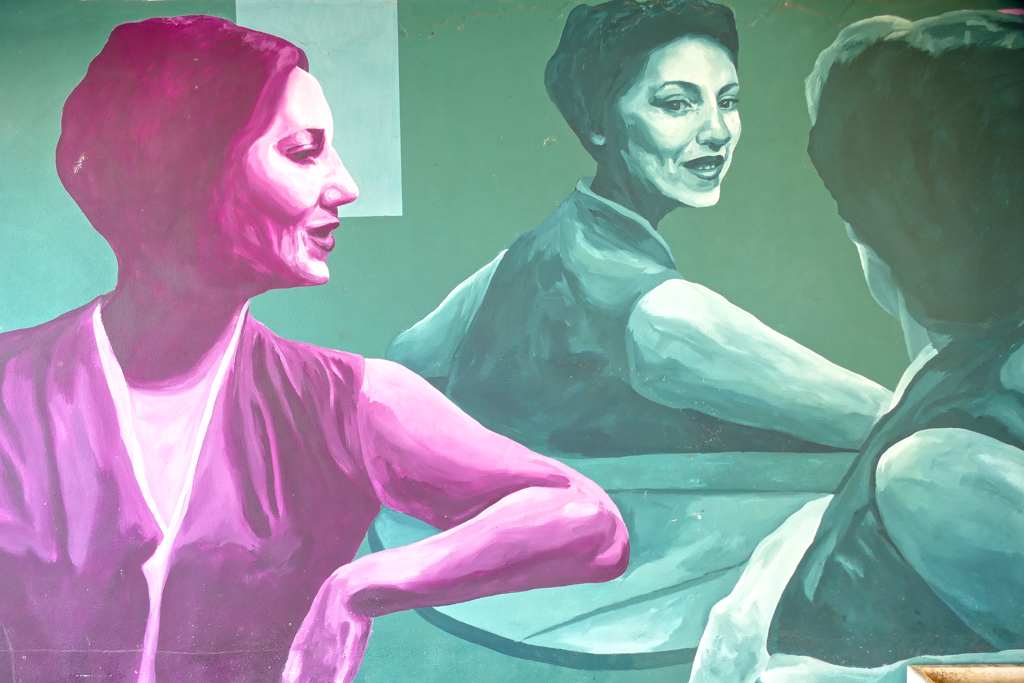
The neighborhood has retained its authenticity. Children run around in small squares, old ladies push their shopping carts from the long-established butcher to the greengrocer while a group of old men plays cards, unmolested by the hustle and bustle around them.
I love Graça’s authentic allure.
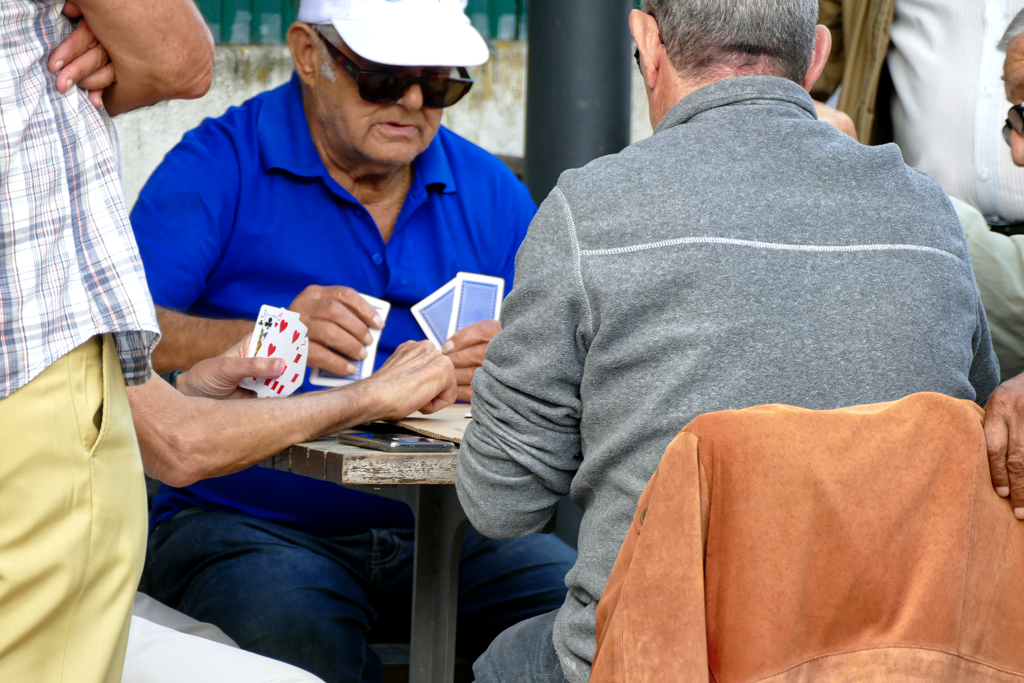
And, of course, the street art that you can find on many of the beautiful, if sometimes somewhat dilapidated, houses.
Some world-famous street artists have left their artistic mark in Graça and you shouldn’t miss them!
Isa Silva
Right on the corner of Sapadores and Rua Natália Correia is an iconic mural by Isa Silva. Silva was born in Lisbon in 1966. Early on, she developed a passion for all things creative. She received a strong impulse in her love for storytelling while studying at the Escola Artística António Arroio in Lisbon.
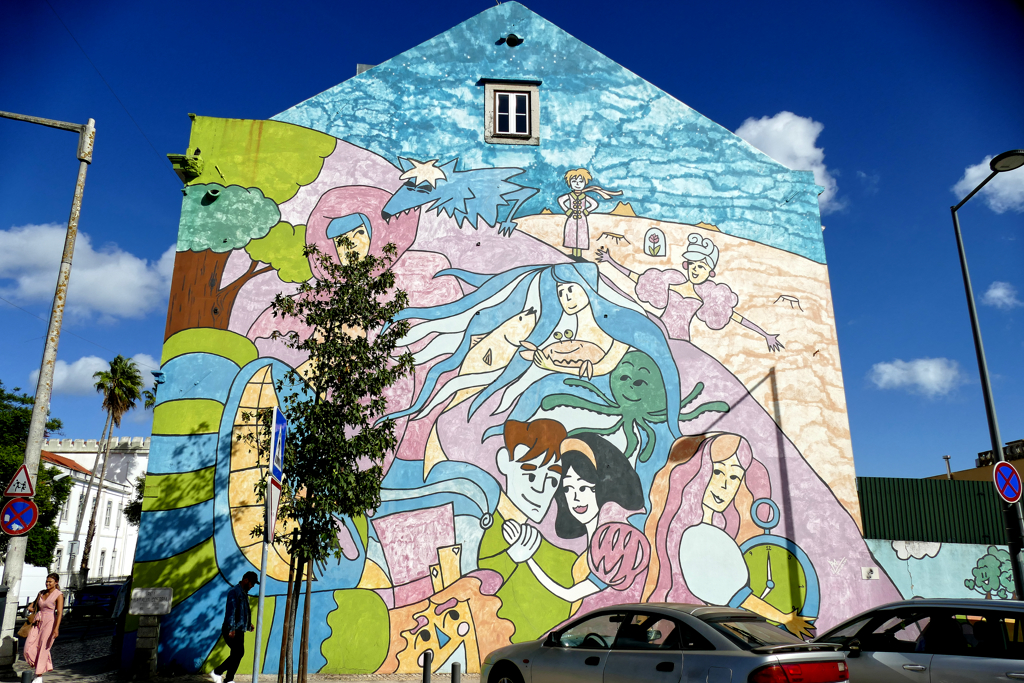
She later discovered her passion for photography, drawing, painting, and writing – four qualifications that perfectly equipped her for a career in graphic design. Isa Silva has also taken part in numerous group exhibitions with works from the areas of drawing, photography, and painting.
After publishing several books and working as a theater costume designer, she entered the world of street art in 2014.
Shepard Fairey
Who doesn’t know Mr. Frank Shepard Fairey? Whereby, his pseudonym OBEY might sound more familiar to you. Born in 1970 in Charleston, South Carolina, this street artist, graphic designer, and illustrator has been around for quite a while. He also appeared in the legendary street art documentary Exit Through the Gift Shop by British artist Banksy in 2010.
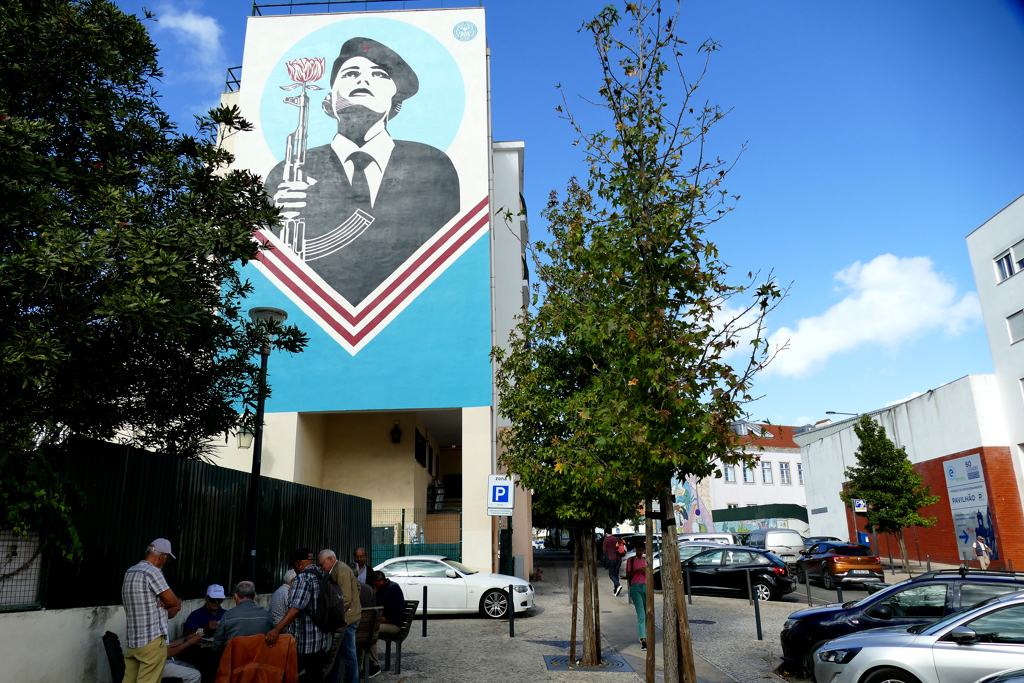
His first claim to fame was his André the Giant Has a Posse sticker campaign. In 1997, he co-founded the design agency BLK/MRKT, specializing in guerrilla marketing campaigns. Customers were none less than Pepsi, Hasbro, and Netscape. In 2003, Fairey left BLK/MRKT and established his own agency called Studio Number One. Also, this whizz-kid launched the fashion label OBEY clothing in 2001.
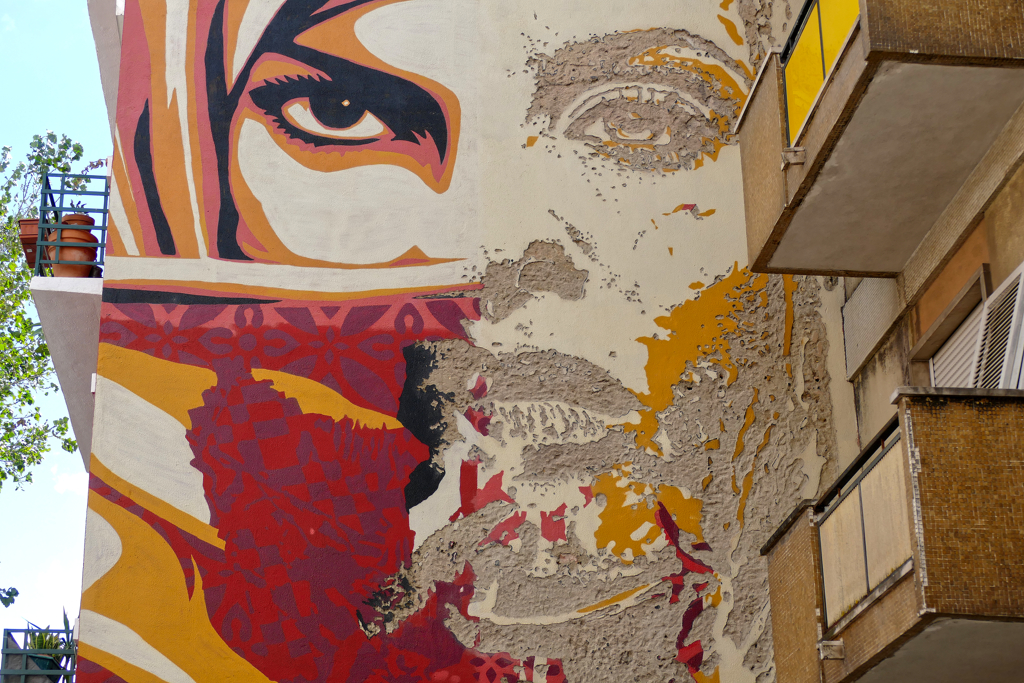
Fairey achieved greater notoriety during the 2008 US presidential election campaign with his iconic poster HOPE for Barack Obama. It is actually only the most famous of a series of posters that he designed for the Obama campaign. Eventually, he endorsed Democratic candidate Bernie Sanders in the 2016 United States presidential primary.
I’ve introduced OBEY already in many former posts on urban art such as Berlin, London, Málaga, Paris, and Vienna.
VHILS
Alexandre Manuel Dias Farto aka VHILS who lives and works in London and Lisbon takes the opposite approach of other artists: he doesn’t add, instead he strips away. He carefully removes layers of walls using heavy tools, creating hyper-realistic portraits. As a result, he has developed an absolutely unique visual language.
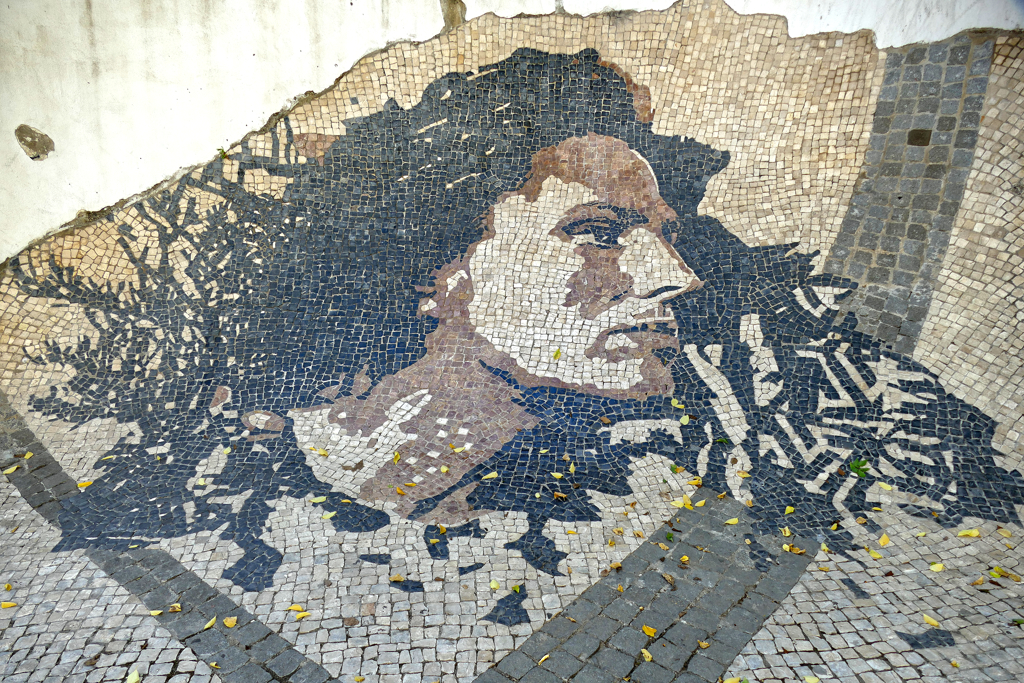
The Portuguese artist has been presenting his work worldwide since 2005 not only on the street, but also in exhibitions, events, and various projects. He has worked with renowned institutions around the world as well as with communities in the favelas of Rio de Janeiro.
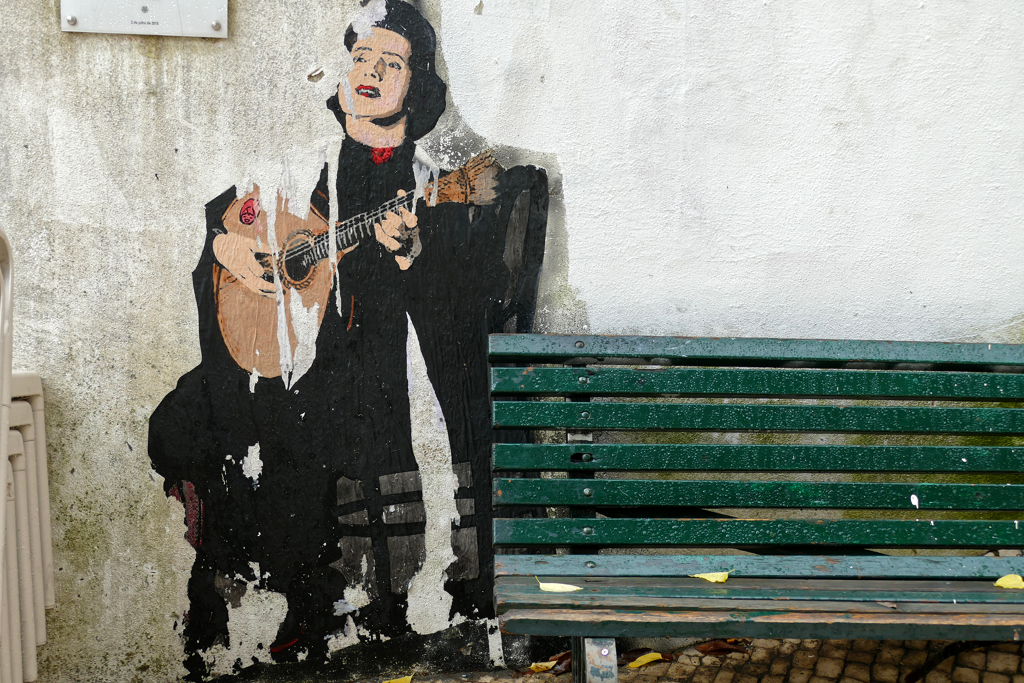
As experimental as VHILS is, in addition to his iconic bas-relief murals, he has worked in a variety of media: from stencil painting to metal etching, from videos to sculptural installations.
VHILS has also directed music videos, short films, and two stage productions.
VHILS’ magnificent exhibition Multitude can be seen at the Millennium Iconoclast Museum of Art MIMA in Brussels until January 2025.
I’ve also introduced VHILS’ murals in my post on Best Street Art in Berlin, Best Street Art in Porto, and Best Street Art in Brussels.
ADD FUEL
Diogo Machado aka ADD FUEL has a degree in Graphic Design from the IADE Creative University in Lisbon. After working in design studios in Portugal and Germany, he has been focusing solely on his artistic work since 2007.
Starting under the fierce moniker Add Fuel to the Fire, he initially created a buoyant universe full of bizarre characters.

In 2008, now under the short moniker ADD FUEL, he turned to pattern by interpreting the tradition of Portuguese tile design.
Besides the numerous murals ADD FUEL has been creating in various countries, he has also been showing his work in solo and group exhibitions.
Today, Diogo Machado is based in the small town of Cascais on the Atlantic coast north of Lisbon.
OzeArv
José Carvalho aka OzeArv was born in Lisbon in 1980. After completing his fine arts studies at the Escola Superior de Artes e Design, he began creating murals on the streets of Lisbon.
OzeArv’s flamboyant style quickly gained recognition, so much so that his creations can be found in various cities around the world.

OzeArv continually explores new artistic possibilities, techniques, and different styles.
In 2022, he was listed alongside artists Regg and MrKas – whom I’m introducing in my posts Best Street Art in Porto as well as in my post on the Azorean island of Terceira – in the top 100 street art murals globally, as selected by Street Art Cities, the largest digital community in the field of Urban Art.
Daniel Eime
Even before graduating in set design, Daniel Eime ventured on an artistic journey at age 16. What began with wild graffiti, eventually evolved into a full-time passion for street art and painting.
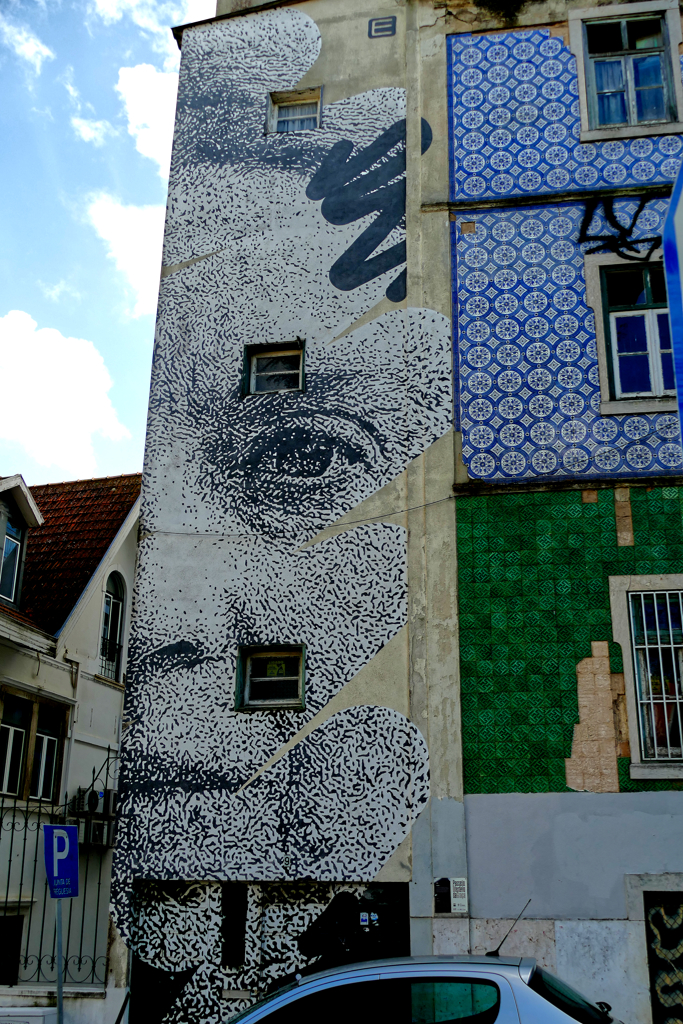
Initially experimenting with various media such as stickers, posters, and other media, Eime discovered his true passion in stenciling. Since 2008, this intricate technique has defined his creations, leaving a distinct mark on every piece.
Renowned for his large-scale murals and meticulously detailed stencils, Eime brings to life mesmerizing characters, each with an enigmatic gaze.
Eime’s talents have taken him across Europe, where he has participated in numerous street art festivals and exhibitions, both solo and collective, leaving an indelible imprint on the contemporary art scene.
I’m introducing other works by Daniel Eime in my posts Best Street Art in Porto and Best Things to Do in SAO MIGUEL, the Most Varied Island of the Azores.
Mário Belém
From Carcavelos, a small town just outside Lisbon, Mário Belém shapes street art. A graduate of the ArCo Centro de Arte e Comunicação Visual in Lisbon, he originally focused on graphic design and illustration. He was successful as a digital illustrator from 2002 to 2015. But his passion for painting didn’t let him go and led him back to his creative roots.
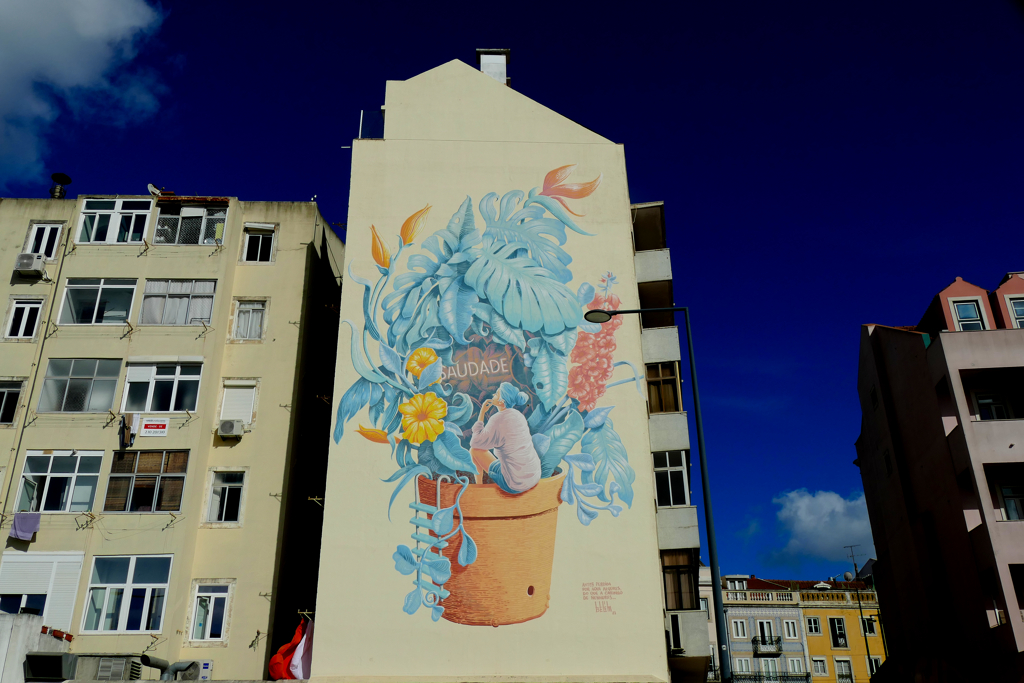
A recognized painter and muralist, Belém effortlessly combines studio work with large-scale public art. He tells visual stories in his delicate style. His art, often painted on sculpturally arranged wood, deals with themes of pop culture and the complexity of modern life.
Ninapaintina
Nina studied art and graduated from the Academy AKI in Enschede in 2007. She’s using different techniques for her artwork such as acrylic on canvas as well as screen printing. However, her greatest love remains street art.
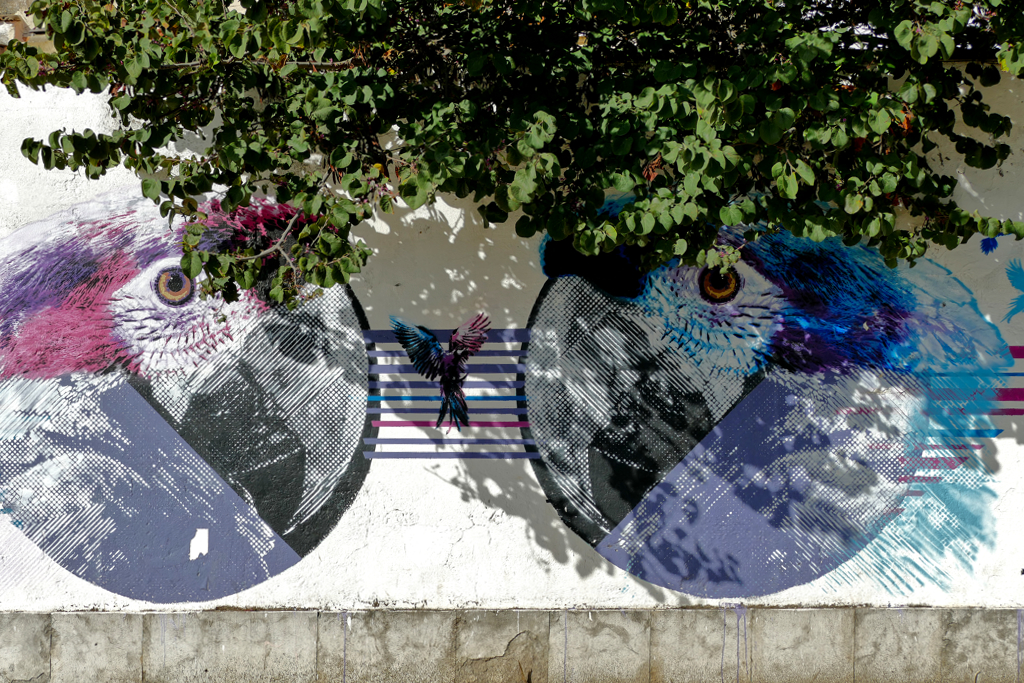
Under her nom de paintbrush Ninapaintina, she has already embellished various facades in the Netherlands and other countries.
I was very surprised to learn that Ninapaintina also designed some cool merch for the legendary soccer team FC St. Pauli in Hamburg.
I introduced Ninapaintina already in my post Murals in CURACAO: The Best Street Art Projects in Willemstad.
Urbansolid
Riccardo Cavalleri and Gabriele Castellani, who now form the duo Urbansolid, have a past life as writers. They met at the Brera Academy in Milan and realized that the language of urban sculpture was their jam.
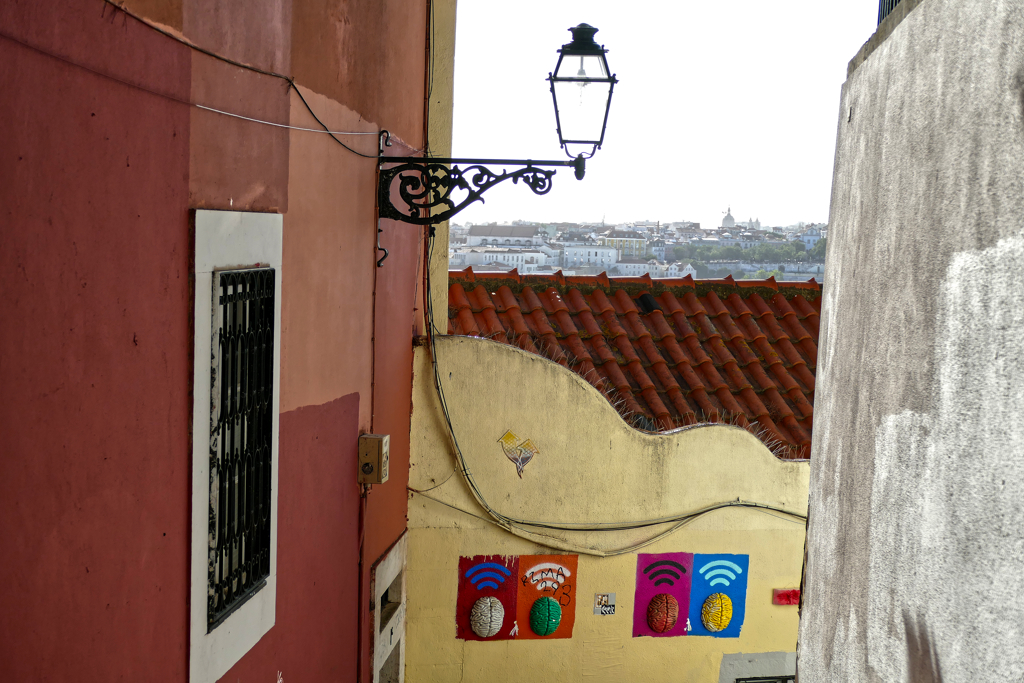
Their sculptures, which they place as basreliefs on the walls of metropolises, have contemporary and allegorical messages.
The materials used for this are, for example, plaster or cement.
I admired Urbansolid’s iconic sculptures in various locations in Milan and used an image as the cover for my post Packing Light Yet Traveling in Style.
Diego Dgoh And Mafalda MG
Like many great street artists, Diego Dgoh comes from the Brazilian art center of São Paulo.
He was a fan of comics from a young age and claims that superhero drawings still have an artistic influence on his work today. While studying at graphic design college, he began to develop his style and become more professional.
In 2006 he discovered graffiti and hip-hop culture.
In his works, characterized by characters with geometric shapes and different gradients of blue, he uses materials such as spray, latex and mixed techniques often used in Brazilian street art.
After a few working stays in Europe, he returned to Brazil and opened a studio in his hometown. In addition, Diego Dgoh offers workshops in institutions and schools.
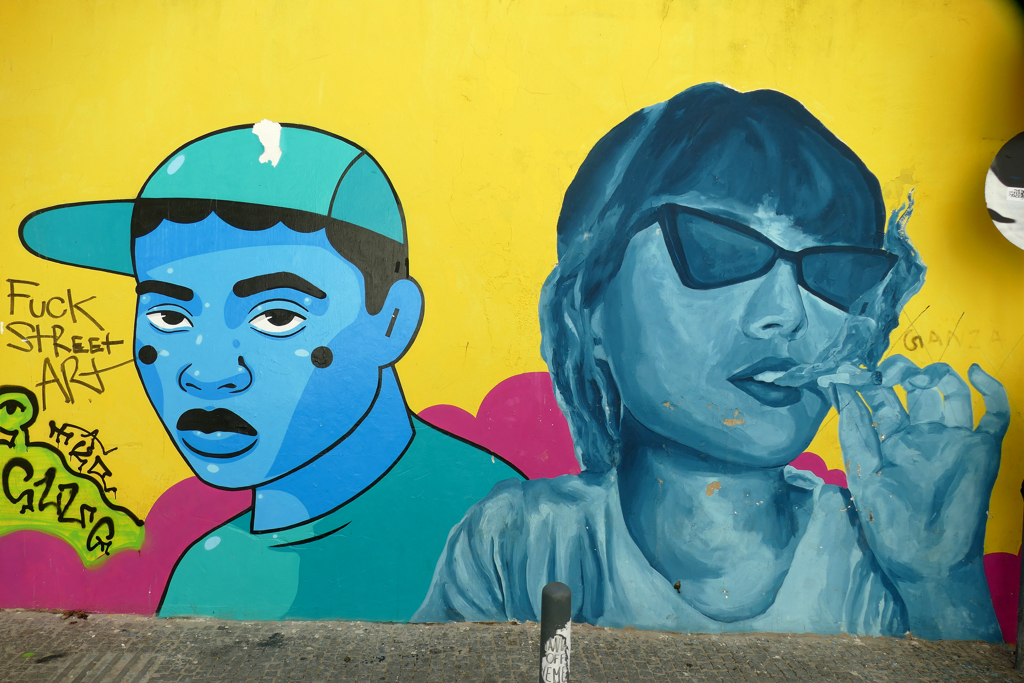
Mafalda M. Gonçalves aka Mafalda MG has a bachelor’s degree in drawing from the Faculty of Fine Arts in Lisbon. In her portraits, she uses a monochromatic color palette, preferably primary colors, and a figurative style. Your art projects in public spaces are always influenced by the location in which they are placed. The love of street art stems from the appeal of capturing and holding the attention of passers-by in a place as fleeting as the street.
…And Beyond
Within Lisbon’s historic old town, Graça has the highest density of urban art. But it would be remiss not to keep an eye out for street art in other parts of the city, too!
How many times in Lisbon did I turn a corner and find myself in front of an unexpected yet fantastic mural?
How many times have I spontaneously jumped out of the bus to run back to a great work that we had just passed?
That’s why the listing of the following murals follows no logic. They are wonderful finds that I unexpectedly discovered somewhere in the city.
But don’t worry, you can still find their exact location on the map at the end of this post.
Mariana Duarte Santos
Mariana Duarte Santos, a visual artist living in Lisbon, takes the viewer to forgotten moments with her paintings. Although she works in a variety of media, the vibrant world of mural painting is her greatest passion.

In her murals, Mariana captures moments from old, long-forgotten films and television shows. She reinterprets these images and breathes life into them.
In this way, her work evokes a comforting nostalgia and connects the past and present on the street art wall.
In addition to numerous group exhibitions, Mariana Duarte Santos has also collaborated with poet Gerry Brennan on an illustrated book of poetry, merging her images and his words.
For me, Mariana Duarte Santos was a wonderful new discovery.
ARISCA
Ines Arisca aka ARISCA is a multidisciplinary artist from Porto. She is proficient in a wide range of techniques and media including glass and ceramics as well as photography and film. Her versatility allows her to work creatively in a variety of formats, from canvases to large-scale murals.

After the artist earned a degree in fine arts in 2015, she initially worked in her grandfather’s upholstery workshop. In 2017 they began to devote themselves fully to their art. After a year in Greece, she returned to Porto, where she further developed her painting while also working as a fashion photographer.
Since 2021 she has been working exclusively as a freelance artist. She devotes herself primarily to wall painting and illustration. She uses murals as a way to tell stories and visualize emotions. With her art, ARISCA strives to simplify complex connections and thus encourage reflection.
The Carnation Revolution And Street Art
With five large murals, the city of Lisbon commemorates a crucial moment in Portugal’s recent history: in 1974, the so-called Carnation Revolution put an end to a dictatorship in Portugal that lasted almost five decades.
From 1926 onwards, the dictatorial Prime Minister António de Oliveira Salazar ruled the country with an iron grip. His death in 1968 sparked necessary instability, culminating in a military coup in 1974. Citizens flocked to the city streets to support the revolution. In a beautiful act of solidarity, they stuck carnations into the soldiers’ gun barrels and carried the flowers as a symbol of peace and freedom.
Street art had long played an important role in the politically charged environment. The Carnation Revolution saw political slogans and powerful murals appear on walls across the country. Political groups that did not have access to traditional media spread their messages and calls through street art. Since then, this art form has been closely linked to the history of Portugal. In this tradition, five national artists were now able to realize their homage to the important event.
Apart from ARISCA, works by street artists António Alves, Kruella d’Enfer – whom I’m introducing in my post Best Street Art in LISBON – Part II: Marvila, YouthOne – whom I introduced in my post Best Street Art in Porto – and +MaisMenos- were chosen to contribute to the anniversary.
+MaisMenos-
Miguel Januário was born in Porto in 1981. His alter ego and art project +MaisMenos- emerged from an academic dissertation in 2005. In his artistic work, he criticizes the political, social, and economic structures that shape contemporary urban life.
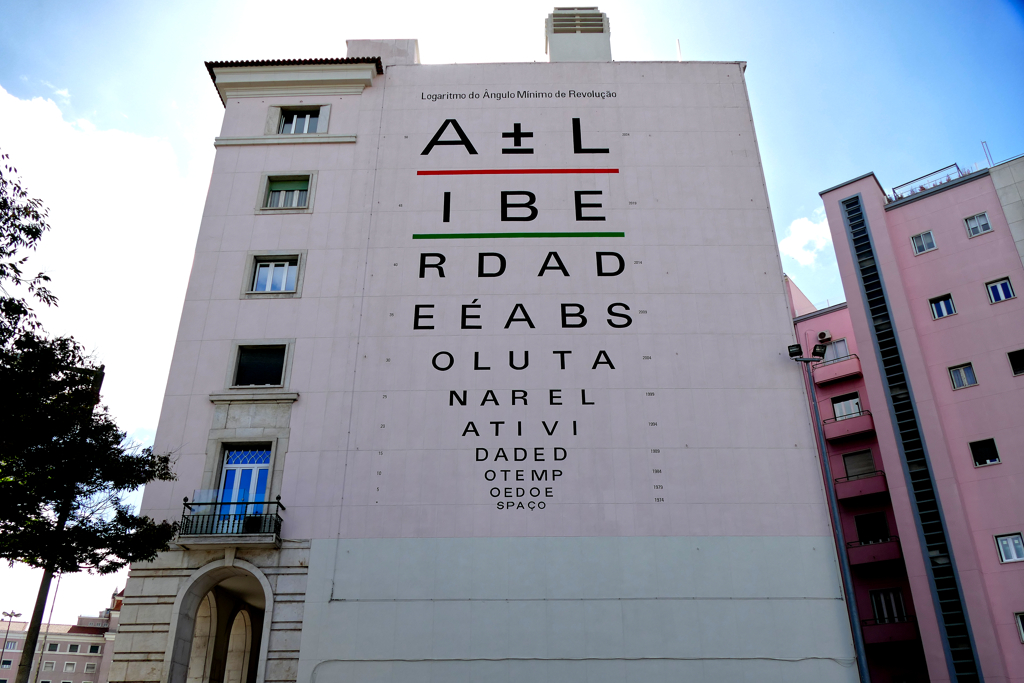
It translates to Freedom is Absolute in the Relativity of Time and Space.
He has created provocative works in both public and private spaces. This also includes illegal street art. Interestingly, in addition to his public interventions in the guerrilla style, works are presented in solo and group exhibitions.
PichiAvo
It wasn’t by incident that my post Street Art in Valencia was one of my first articles on Urban Art ever. After all, Valencia is one of the most vibrant places in Europe when it comes to Street Art. No wonder many internationally recognized Urban Artists are coming from this city in southern Spain. For instance, PichiAvo, a duo consisting of Pichi and – you probably guessed so – Avo.
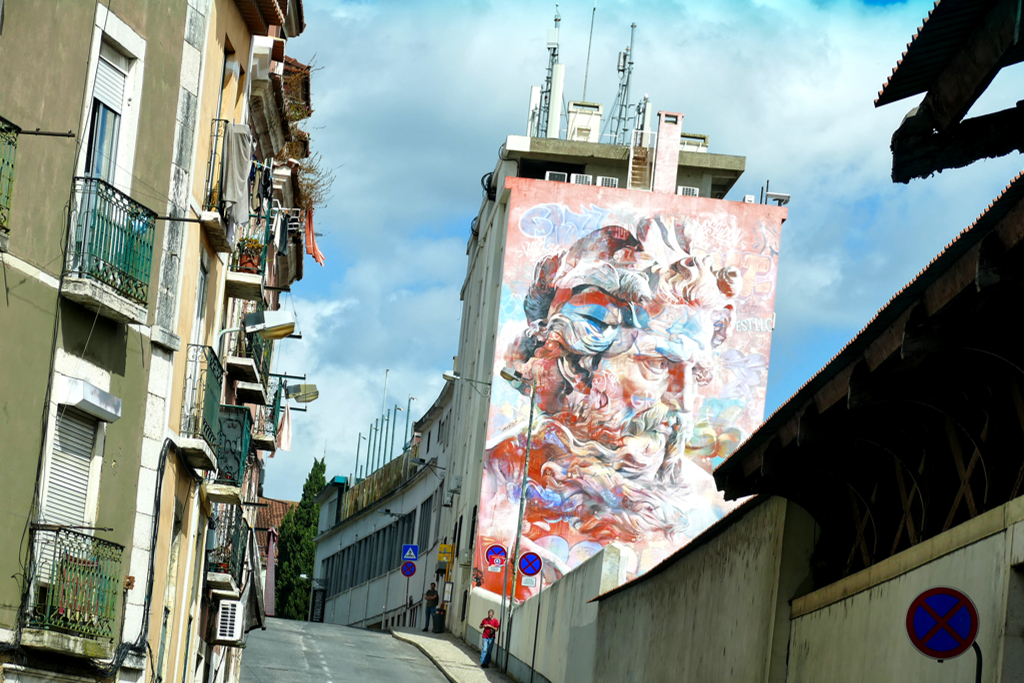
Since 2007, Juan Antonio Sanchez and Alvaro Hernandez, the two masterminds behind PichiAvo, have successfully worked also internationally. As a matter of fact, they were the first European street artists ever who contributed to the legendary Houston Bowery Wall in New York in 2017. In 2019, they created together with VHILS the world’s second-largest mural in the city of Porto.
It’s a good thing that they are trained in Fine Art since this way, they combine classical motifs with techniques of street art.
I introduced another mural by PichiAvo in my post Best Street Art in BERLIN.
AKACORLEONE
Pedro Campiche aka AKACORLEONE was born in Lisbon in 1985.
He was involved in art from a young age and started graffiti in the early 2000s. Later, in addition to wall painting, he devoted himself to illustration and exhibited his first works in galleries shortly afterward.
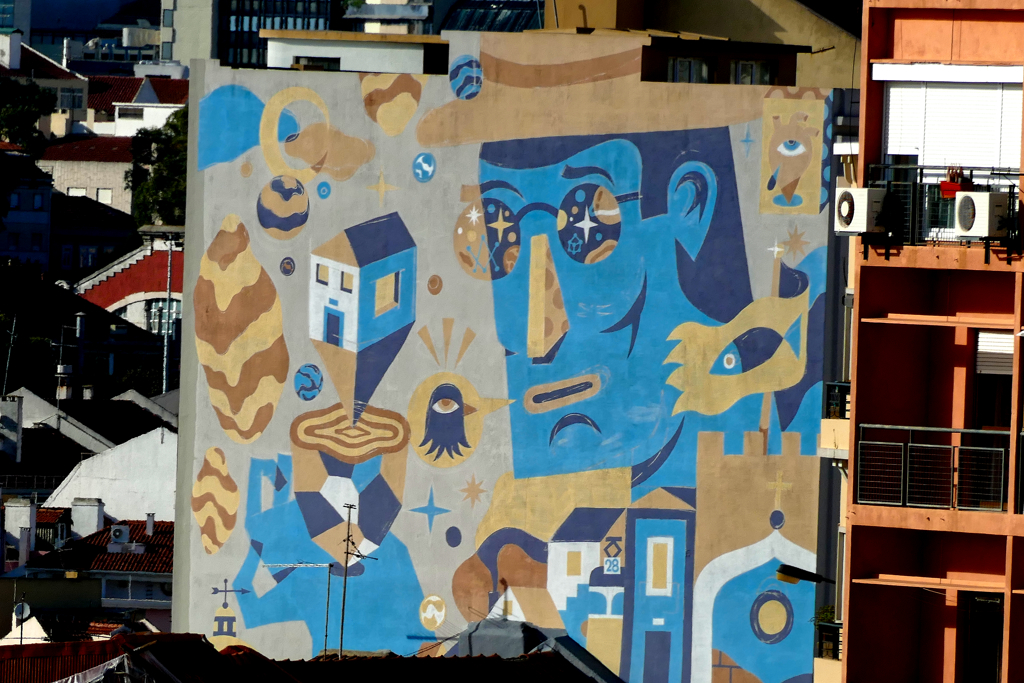
Over the years, in addition to painting, he also worked on installation and sculpture.
Today, AKACORLEONE is known for his multidisciplinary approach and his continuous pursuit of new ways to present his art.
In addition to Portugal, his works have also been exhibited in 14 other countries.
Bordalo II
Artur Bordalo aka Bordalo II was born in Lisbon and is the grandson of the painter Artur Real Chaves Bordalo. As a child, he spent hours at his grandfather’s studio.
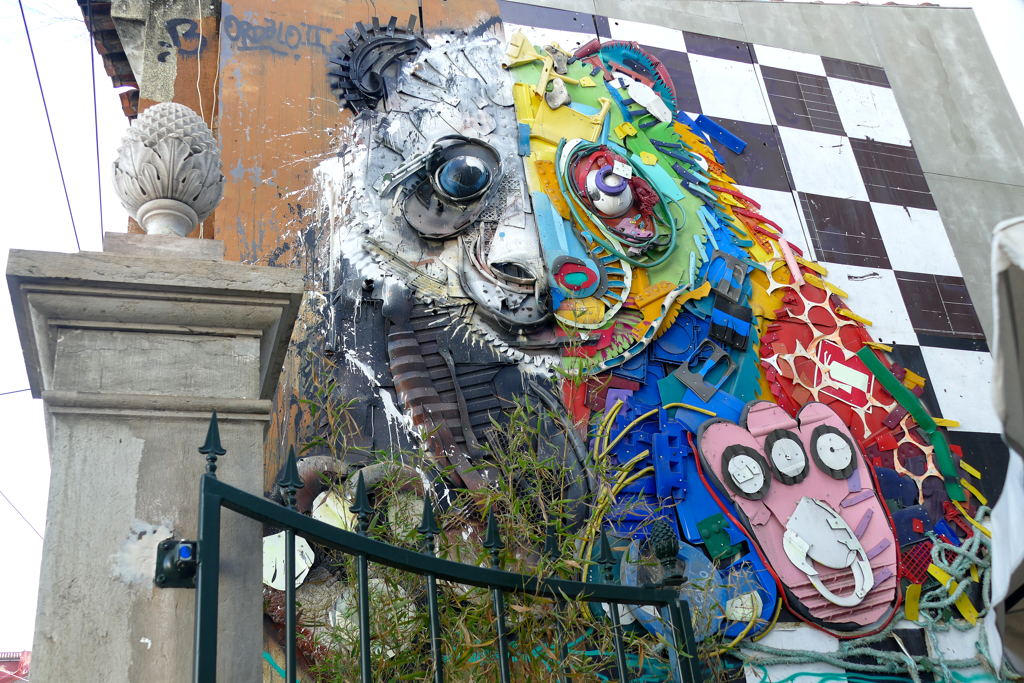
He studied at the Faculty of Fine Arts at the University of Lisbon. The basis of his works is urban waste. His motto is, that one man’s trash is another man’s treasure. He denounces a consumer-oriented lifestyle and wants to inspire sustainability. He later completes his works using spray paint from discarded objects.
In addition to Portugal, his works of art can be found in many European cities and the USA.
I’m introducing another work by Bordalo II in my post Best Street Art in Porto.
Tami Hopf
The artist, art director, and illustrator Tami Hopf comes from the Brazilian cradle of fantastic art, namely São Paulo. Today, however, she lives in the Swiss city of Vevey.

In 2008 she founded Hopf Studio and worked primarily in the area of digital illustration. Later, large-scale murals were added and – as with a surprising number of other street artists – tattooing.
Hopf’s works always depict a tension between euphoria and sadness, relationships and loneliness.
Frederico Draw And Ergo Bandits
Frederico Soares Campos aka Frederico Draw was born in Porto in 1988 and has a Master’s in architecture. No wonder, then, that his artistic work is essentially based on the transformation of empty spaces.
His unique style is characterized by an unfinished streak that gives lyricism to the subject. He transforms any surface into a wide drawing pad and is said to be using spray cans like charcoal or pencils.
Since 2011, Frederico Draw has been a member of the artist collective Colectivo RUA and one of the main figures of hyperrealistic street art in Portugal.
I’m introducing another great work by Frederico Draw in my posts Best Street Art in Porto.
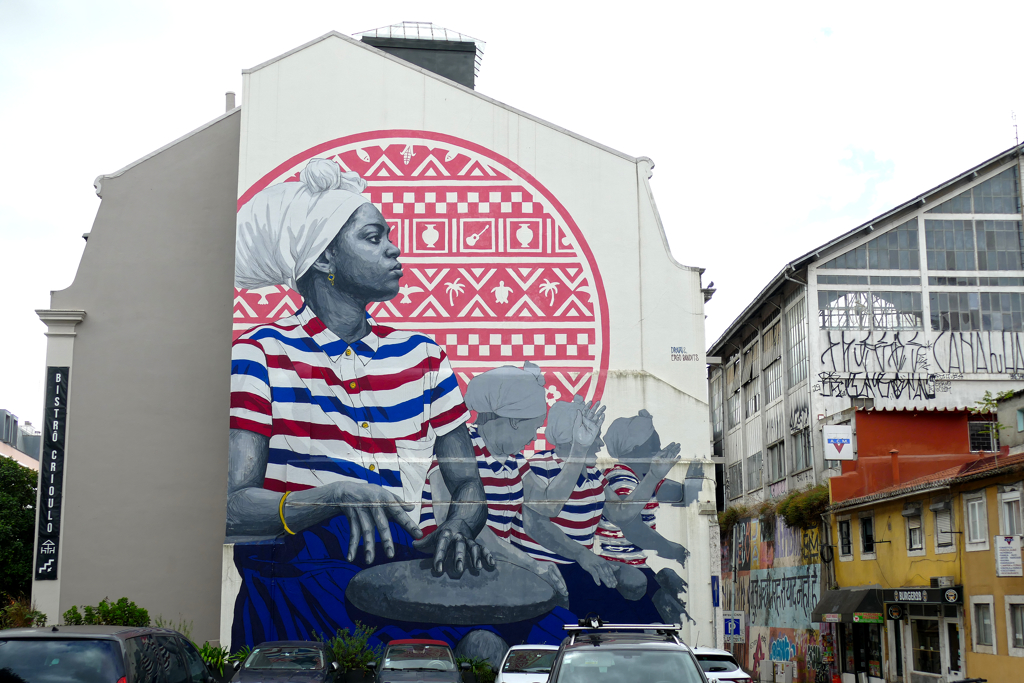
Frederico Draw collaborated with the Ergo Bandits on this mural, which adorns the wall of the Cultural Center of Cape Verde. The Ergo Bandits are a street art collective that stands for its unique urban interventions. Her works often deal with social and political issues.
Jacqueline de Montaigne
Jacqueline de Montaigne is a self-taught artist with a background in medical ethics and health sciences. She began her artistic career only in 2018 but has quickly gained wide recognition. She has shown her work in private collections as well as public exhibitions. Also, she has participated in international artist residencies and biennales. Hence, her more or less 120 large-scale murals can be found all over the world.
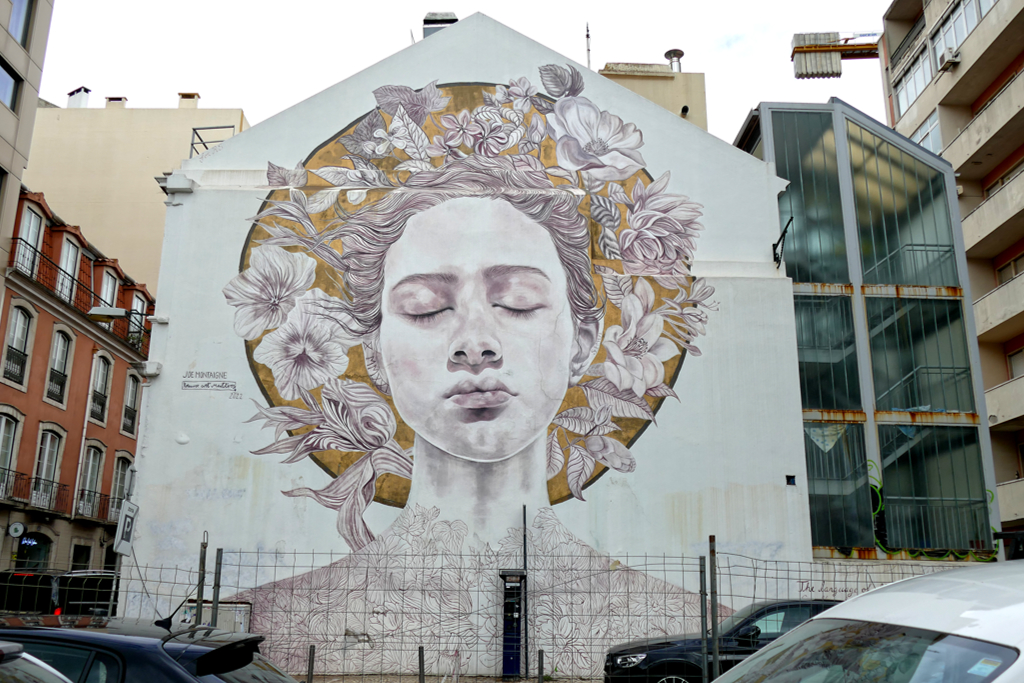
In her visual storytelling, de Montaigne draws inspiration from the culture of the places she paints. She also often adds flowers and fauna for their symbolic meanings.
That watercolors are her preferred medium shows even in her large-scale murals as they have a translucent aura and a certain fluidity to them. Amazingly, her water-based technique also makes her work eco-friendly!
After having lived and worked in England, Scotland, the USA, and the Philippines, Jacqueline de Montaigne is now based in Cascais, a small town north of Lisbon.
On Instagram
To dig deeper into the subject and see more of the amazing art the above-featured artists have created, you can just check out their Instagram accounts:
ADD FUEL
AKACORLEONE
ARISCA
Mário Belém
Bordalo II
Diego Dgoh
Frederico Draw
Mariana Duarte Santos
Daniel Eime
Shepard Fairey
Tami Hopf
Mafalda MG
+MaisMenos-
Jacqueline de Montaigne
Ninapaintina
OzeArv
PichiAvo
Isa Silva
Urbansolid
VHILS
How to Get Around
One of Graça’s most attractive features is the Miradouro da Senhora do Monte, the highest point in an already very hilly city. Therefore, it can be quite challenging to explore the district. To make things a little easier for you, I advise you to enter Graça from the north from Sapadores. If you then stroll south, you walk up the road on a rather gentle slope. Coming from the south, you would have to climb a very long flight of stairs. Or you wait for the Funicular da Graça below the church and the Miradouro of the same name. Public transport is not as comprehensive in this area and stops are few and far between.
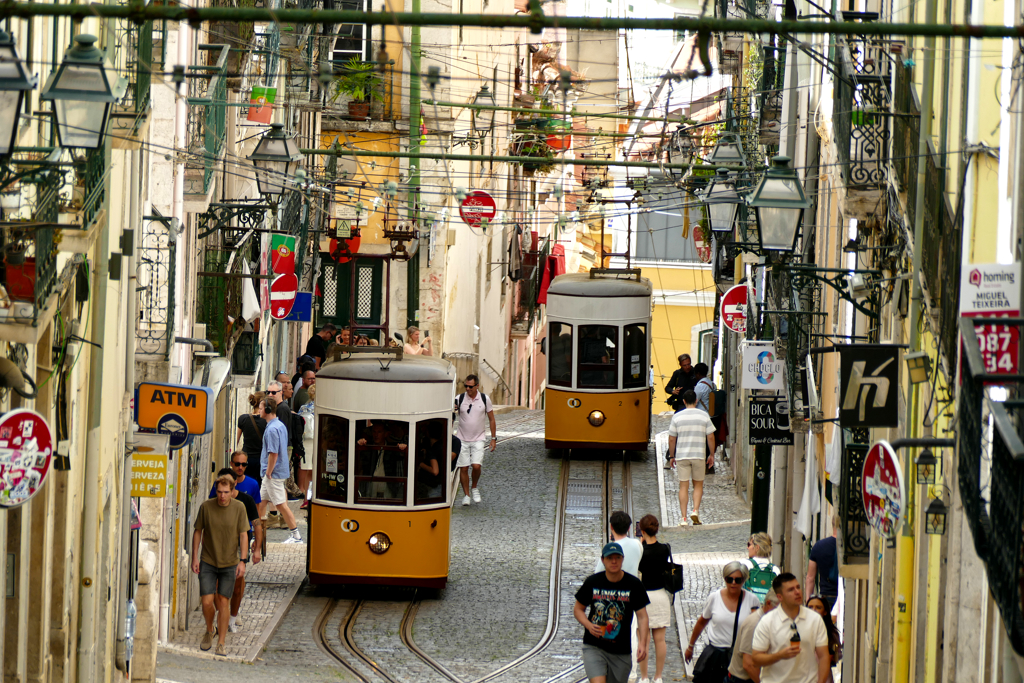
Although Lisbon’s city center is not that big, walking can quickly become tiring. The steep ups and downs of the streets, while picturesque, take their toll. It is therefore advisable to check whether certain corners even in the high old town cannot be reached by bus or tram. Don’t be surprised: Where normal-sized buses have trouble getting there, minibusses wind their way up and down the city’s hills.
Going Public
To see the murals outside Graça, you won’t be able to avoid using public transport. Lisbon has very well-developed public transport. There is a metro, buses, and the legendary
trams. Due to the geographical conditions, public transport in Lisbon also includes elevators and ferries. You can use public transport with your credit card or with the so-called Navegante card. The small paper card costs 50 cents once and can then be topped up with a credit or various tickets.

With so-called zapping, you load a credit of your choice from 3 to 40 €uros onto the Navegante card and can use it for all means of transport.
Which Ticket to Buy
If you travel more than four times a day, a 24-hour ticket for 6.80 €uros is worth it. You can also load several 24-hour tickets onto the card at the same time. They will then work seamlessly one after the other. Also remember that each day ticket includes the Santa Justa elevator, where just a single ride already sets you back 6 €uros, as well as the legendary Bica Funicular. There is also a version including the ferry for 9.80 €uros. Another one for 10.80 €uros includes trains for example to Sintra and Cascais.

On the subway and regional trains, you must scan the card at the entrances before boarding and after getting off while in trams and buses, you only have to hold your card up to the reader when you get on, but you don’t have to check out again.

An alternative is the Lisboa Card, which is available for 24, 48, or 72 hours. You can use public transport and also receive free entry to 40 attractions in Lisbon. You can find out more about this in my post Best of Lisbon.
Map
This map should help you find the murals I’m introducing in my posts on Street Art in Lisbon. However, I split it into three layers: this one about Graça and other parts of the city center, a second one for Marvila, and a third one for the Moscavide neighborhood. This way, you can open them separately.
Clicking on the slider symbol at the top left or the full-screen icon at the top right will display the whole map including the legend.
There were far too many incredible murals in Lisbon to fit them all into one post. So make sure you don’t miss the other two parts of this series: Best Street Art in LISBON – Part II: Marvila and Best Street Art in LISBON – Part III: Moscavide
Also, looking for urban art was only one of the awesome things I got to do during my visit to mesmerizing Lisbon. In my post Best of Lisbon, I take you on a comprehensive city tour. And if you happen to be in transit, check out my guide 24 hours in Lisbon.
Pinnable Pictures
If you choose to pin this post for later, please use one of these pictures:

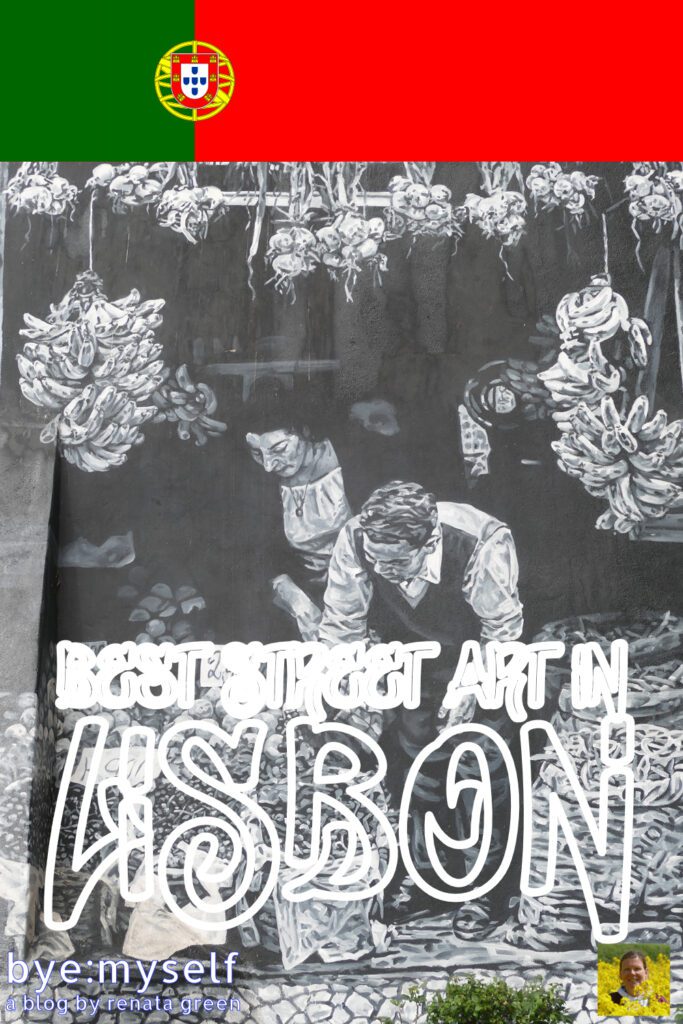
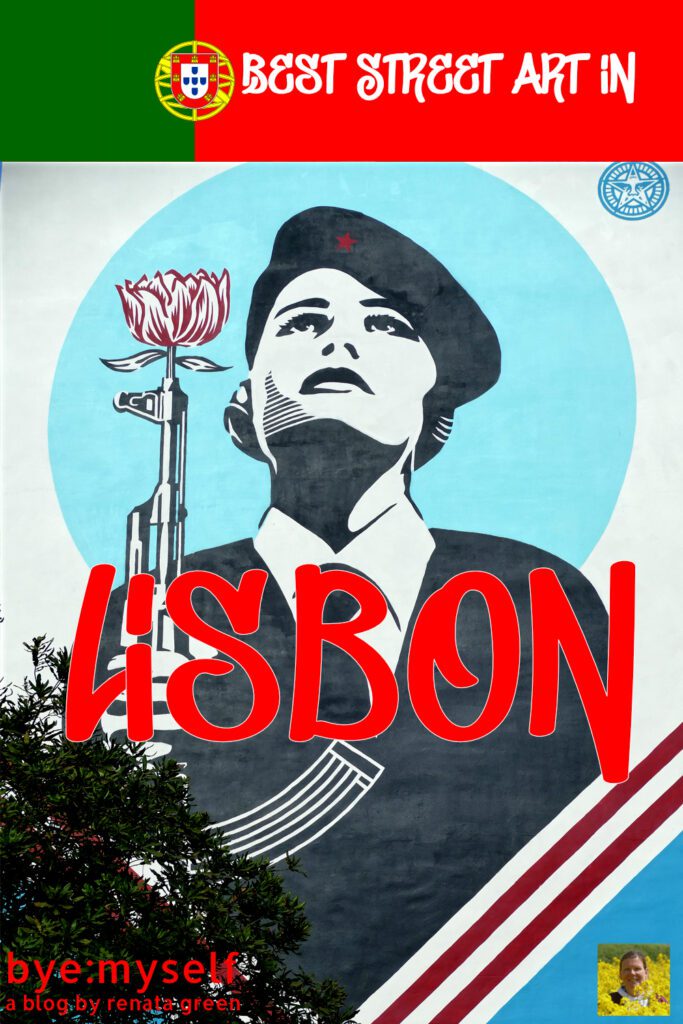
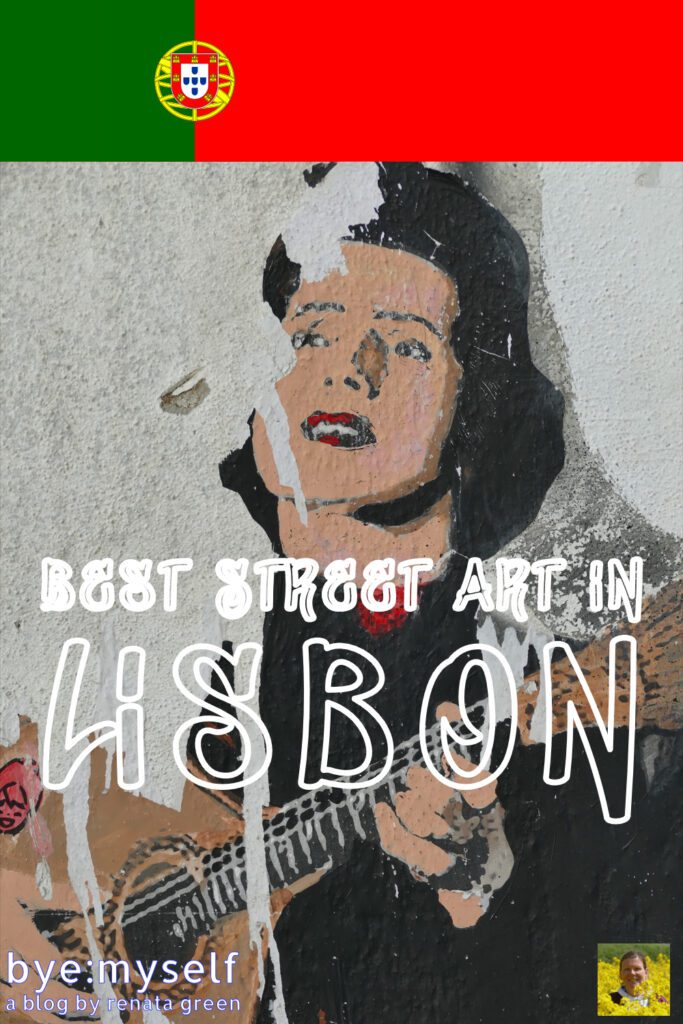
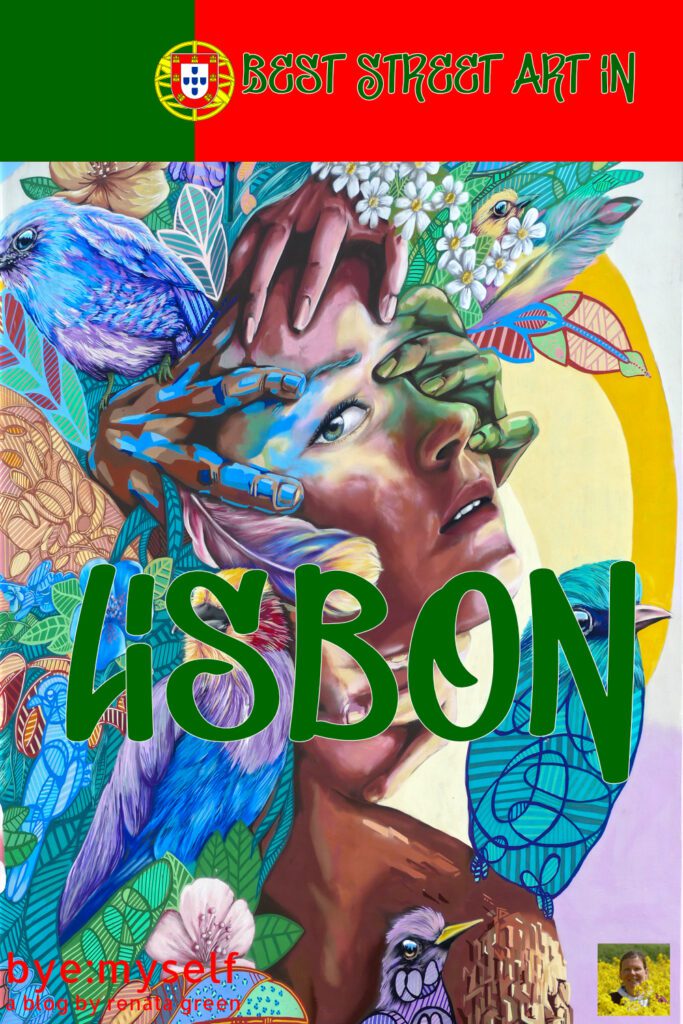
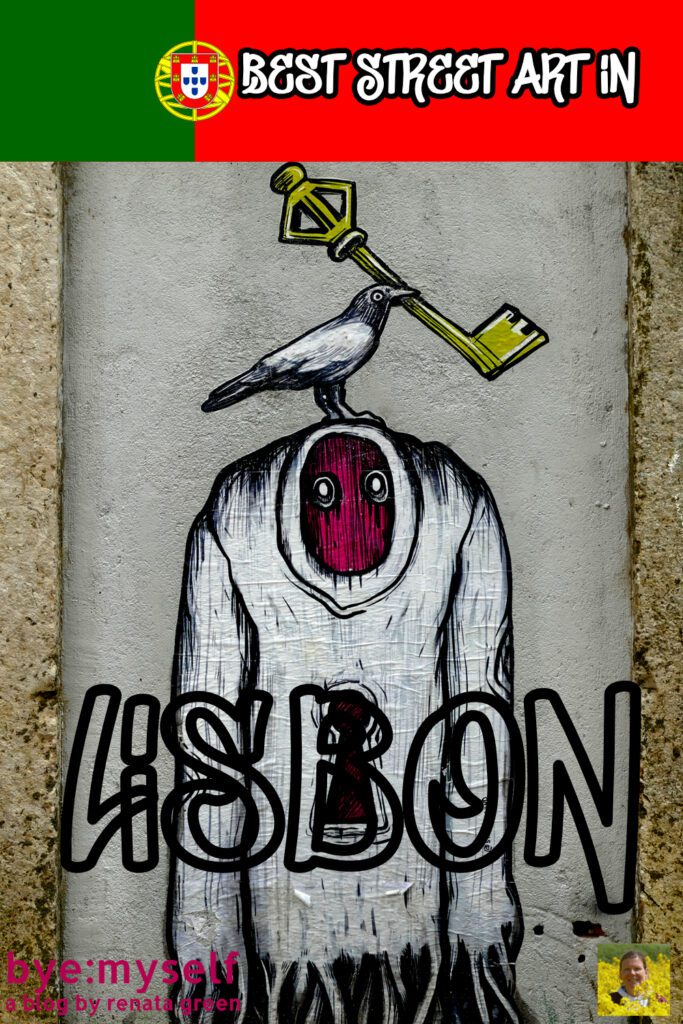
Did You Enjoy This Post? Then You Might Like Also These:
BRISTOL – What to Do on the Best Weekend Break You’ll Have in a Long Time
Best Street Art in BERLIN
Best Street Art in LISBON – Part III: Moscavide
Murals in CURACAO: The Best Street Art Projects in Willemstad
The Amazing Murals of the Hotel Ruins of Alyko
One Week in BONAIRE: The Best Activities Beyond Diving
BORDEAUX: Best Street Art on the Left Bank of the Garonne
Best Street Art in VILNIUS
* This is an affiliate link. If you book through this page, not only do you get the best deal. I also get a small commission that helps me run this blog. Thank you so much for supporting me!
